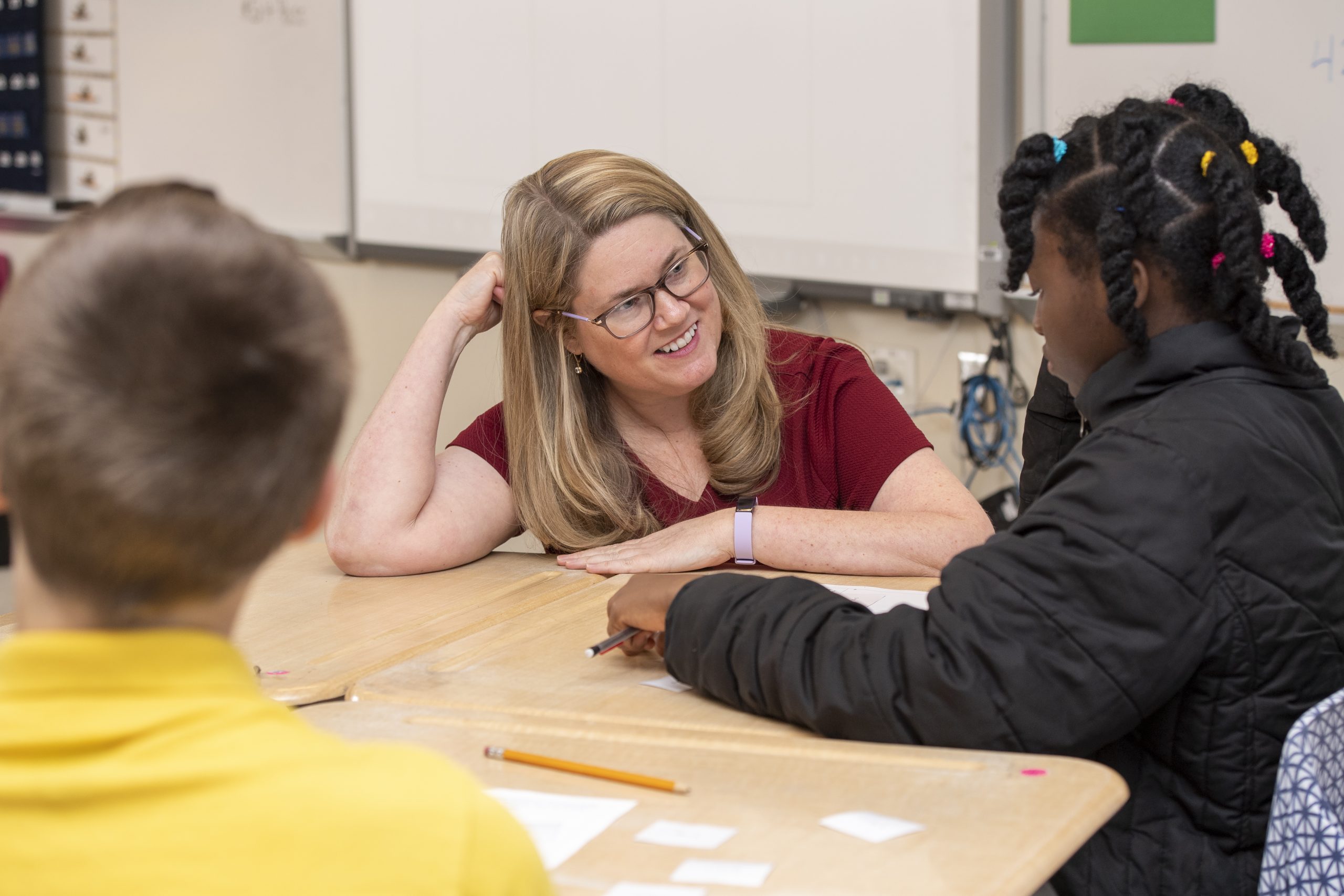Research Spotlight: Amanda Jansen

University of Delaware professor Amanda Jansen provides a rich, descriptive study of teachers’ understanding of engagement.
If your high schooler has ever complained about their math homework—wondering when they’ll ever need the pythagorean theorem after graduation—they are not alone. Research in mathematics education often shows that students’ motivation to learn math tends to decline as students move through the K-12 school system. So University of Delaware Professor Amanda Jansen began to look closely at student engagement in the secondary math classroom, wondering how teachers thought about engagement and if there were teaching practices that could disrupt these trends.
In a recent study conducted as a part of a grant project funded by the National Science Foundation (NSF), Jansen and her co-authors offer an exploratory study on how secondary mathematics teachers understand student engagement in their classrooms. While some teachers understood engagement as a form of behavioral compliance, most of the teachers in Jansen’s study understood engagement to be a multidimensional orientation with behavioral, cognitive, emotional and social components. With attention to teachers’ first-person narratives and reflections, this study offers educators a model for understanding student engagement so that they can better facilitate deeper learning in their classrooms.
“If mathematics teacher educators better understand how math teachers think about engagement, we can support them with either better achieving their visions for engaging students or introduce them to alternative ways of thinking about engagement that may be more motivating for students,” said Jansen, who specializes in mathematics education in the College of Education and Human Development (CEHD)’s School of Education.
Dimensions of engagement
In their descriptive study, Jansen and her co-authors examined how 28 secondary mathematics teachers in two states in the United States talk about their students’ engagement. During interviews, Jansen and her team asked teachers to provide their definitions for engagement, describe their teaching strategies for engaging students and describe their observations of engagement during a video clip from their own classroom.
“Engagement is a complex orientation, but I tend to think about it as having both a form and a function,” Jansen said. “A function is what we’re trying to achieve in the classroom—compliance with an activity, for example, or deeper learning in relation to a concept. But forms of engagement can manifest in different ways. Engagement could be behavioral, when a student is completing a task, or cognitive, when a student is making connections between concepts. It could be an emotional or affective response, when a student shows curiosity, or a social interaction in the classroom that supports learning.”
Jansen and her co-authors found that some teachers understood the purpose of engagement to be compliance with a classroom activity. For example, two teachers thought about student engagement primarily through students’ behavior as it related to a task.
“[My students are] engaged through interactive notes and . . . PowerPoints that go with them . . . so they’re engaged with closed activities inside the notes and interactive parts within the notes where they have to perform,” said Peter, one of the participating teachers. (The teachers adopted pseudonyms for this study.)
Similarly, four teachers thought about the affective component of engagement in relation to completing tasks. Another teacher, Anne, described her effort to “kind of trick [her students] into doing math” through fun activities that students don’t “realize” are math-oriented.
But the majority of the teachers in Jansen’s study understood the primary function of student engagement to be deeper learning about a mathematics concept rather than classroom performance. These teachers talked more about engagement in terms of cognitive, affective and social processes, and they often spoke about more than one dimension.
For example, two teachers described cognitive, affective and behavioral dimensions in their interviews. They reported wanting to support students’ cognitive engagement in learning more than behavioral engagement in completing school tasks.
“I think there’s two different kinds of engagement,” said Chloe, another teacher in the study. “There’s engagement, and, yes, the kids are all working on something, but then there’s an engagement of, yes, they’re actually personally invested in something. So, I would rather like to see it shift more towards the second definition. The difference would be the excitement level, that’s what I would gauge it by.”
Takeaways for educators
Jansen’s study illustrates how teachers’ understanding of the dimensions of engagement aligned with their understanding of the purposes of engagement in secondary mathematics. The study offers important takeaways for researchers seeking to better understand the nature of student engagement, but it offers important takeaways for educators as well.
“A teacher who participated in our study said that just being asked about engagement provoked their thinking further,” Jansen said. “She wondered, ‘What if I looked beyond behavior to think about engagement?’ I think that’s an important takeaway for all educators because with behavior, we can always fake it. But what about the quiet student who doesn’t seem outwardly engaged but who is actually deeply engaged cognitively because she’s thinking hard?”
Jansen also emphasizes that how educators ask students to be engaged often reveals helpful information about educators’ instructional practices and their own assumptions. It can also send a message to students about their role in the learning process.
“When we consider how we engage students in learning, we not only want to support them with learning to be successful in school. We also want to foster their autonomy as learners and sense makers so that they will go out into the world and make it a better place moving forward,” Jansen said. “This second goal pushes us to engage students in ways that go beyond expecting students to comply with expectations, and instead suggests that we create spaces where students can take intellectual risks and grow together in community.”
Jansen’s article, “Secondary Mathematics Teachers’ Descriptions of Student Engagement” was co-authored with Kelly Curtis, Amanda Mohammad Mirzaei, Catherine E. Cullicott, Ethan P. Smith and James A. Middleton and published in Educational Studies in Mathematics. The study was part of a larger set of studies within the NSF-funded Secondary Mathematics in-the-moment Longitudinal Engagement Study (SMiLES).
To learn more about this work, listen to the UD Partnership for Public Education’s Evidence for Education (E4E) podcast featuring Jansen. To learn more about CEHD mathematics teaching and learning, visit CEHD’s STEM Education research page.
About Amanda Jansen
Amanda Jansen is a professor in CEHD’s School of Education specializing in mathematics education. Her research centers on student engagement in mathematics classrooms and teacher learning from reflections on their practice. Her most recent book, Rough Draft Math: Revising to Learn, helps educators create a classroom where students learn by talking and writing about their in-progress ideas. In March 2024, Jansen won UD’s Excellence in Scholarly Community Engagement Award.
STEM Education Faculty at CEHD
Jansen’s research complements the work of CEHD faculty studying mathematics teaching and learning including Christina Barbieri, Laura Desimone, Lynsey Gibbons, Roberta Michnick Golinkoff, James Hiebert, Charles Hohensee, Nancy C. Jordan, Erica Litke, Leigh McLean, Anne Morris, Jessica Namkung, Teo Paoletti, Teomara Rutherford and Eric Sisofo.




